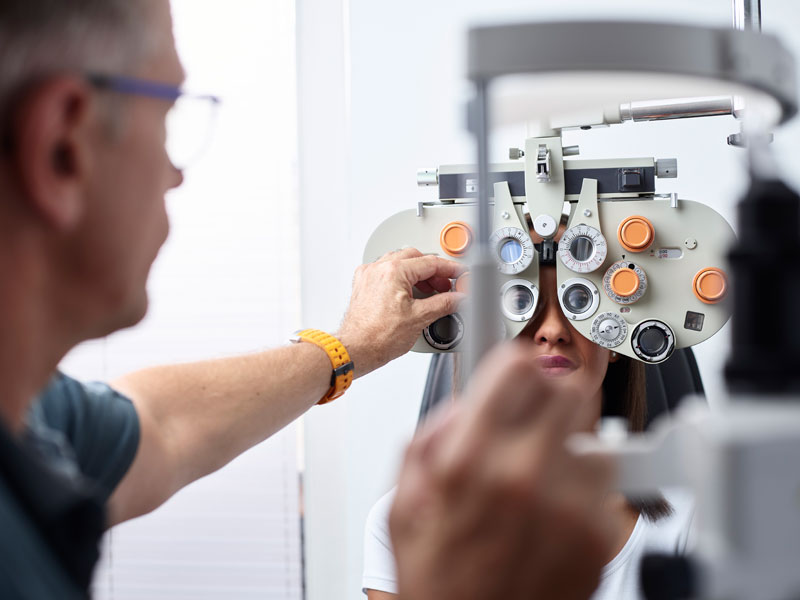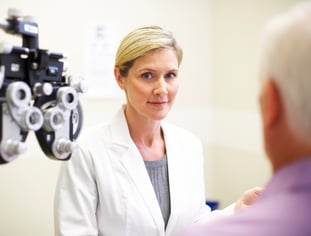Exploring the most up to date Technical Developments in Optometry and What They Mean for Optometrists
In the ever-evolving field of optometry, recent technical advancements are improving just how professionals approach eye care. From the precision of Optical Coherence Tomography to the nuanced understandings provided by AI-driven analysis tools, these advancements are establishing new criteria in patient evaluation and therapy. Teleoptometry is positioned to redefine accessibility, making certain that expertise transcends geographical constraints. As these advancements penetrate the practice, eye doctors are faced with the difficulty of welcoming these tools to boost person outcomes. Yet, the question stays: how will these technical shifts redefine the roles and duties within the profession?
Advancements in Diagnostic Devices
Progressing the field of optometry, technologies in analysis tools have transformed the means eye care experts assess and detect eye problems and visual disabilities. The past years has actually seen considerable technical improvements, making it possible for even more accurate and comprehensive analyses. Optical Coherence Tomography (OCT), for instance, gives high-resolution cross-sectional photos of the retina, enabling the very early discovery of conditions such as glaucoma and age-related macular degeneration. This non-invasive imaging method has come to be indispensable in modern optometric method.
An additional trick innovation is the intro of sophisticated corneal topography systems, which map the surface area curvature of the cornea with precision. These devices are particularly valuable for fitting get in touch with lenses and identifying corneal disorders. Electronic retinal imaging has actually changed conventional ophthalmoscopy, supplying in-depth, breathtaking views of the retina that help with comprehensive aesthetic assessments.
The advancement of wavefront aberrometry has likewise been vital, making it possible for the evaluation of refractive mistakes with unparalleled accuracy (Eye Doctor Optometrist). This technology assists in personalizing corrective lenses and enhancing medical outcomes for refractive surgical treatments. Jointly, these diagnostic developments equip optometrists to deliver remarkable patient treatment, making sure early intervention and customized therapy techniques, ultimately boosting visual health end results
AI in Person Administration
Structure on the structure of advanced analysis devices, the consolidation of fabricated intelligence (AI) in person monitoring stands for a transformative jump for optometry. AI systems are significantly employed to boost efficiency, accuracy, and personalization in patient care. By evaluating large amounts of information, AI can determine patterns and predict prospective eye conditions, making it possible for eye doctors to tailor interventions better. This capability is important in handling chronic eye diseases such as glaucoma and diabetic retinopathy, where very early discovery and continual surveillance are key.
Furthermore, AI-driven systems promote structured patient interactions and administrative procedures. Automated scheduling, virtual consultations, and personalized follow-up plans not only boost person contentment yet additionally enhance time monitoring for professionals. These systems can triage clients based on the seriousness of their problems, making sure that those in vital requirement get timely interest.
Additionally, AI enhances decision-making by offering eye doctors with evidence-based suggestions and therapy paths. By integrating data from digital wellness records, AI tools provide understandings that notify professional decisions, reducing the threat of mistakes and enhancing patient outcomes. As AI continues to evolve, its duty in person administration will likely increase, reshaping the landscape of optometric care.
Developments in Retinal Imaging
In the realm of optometry, retinal imaging has actually observed impressive technological advancements that are improving analysis capacities and individual treatment. Technologies such as Optical Comprehensibility Tomography (OCT) and fundus digital photography have actually changed exactly how eye doctors visualize and examine the retina.
Enhanced imaging modalities like OCT angiography are further refining diagnostic accuracy. This non-invasive technique maps blood flow in the retina, providing critical insights right into vascular health and wellness without the demand for dye shots. Furthermore, flexible optics technology is being incorporated into retinal imaging systems to remedy ocular aberrations, supplying unmatched picture quality. Such developments promote the identification of minute retinal changes that might represent illness development.
Furthermore, innovations in man-made knowledge are augmenting retinal imaging by allowing computerized see this site evaluation of large datasets. These systems assist eye doctors in recognizing patterns a sign of pathology, therefore enhancing diagnostic accuracy and effectiveness. Jointly, these advancements are transforming retinal imaging right into a keystone of modern-day eye treatment, improving end results and increasing therapeutic opportunities.
Teleoptometry's Expanding Role
Teleoptometry is increasingly becoming a crucial element of eye treatment, driven by innovations in electronic communication and analysis tools. This is particularly useful in underserved and rural locations where access to specialized eye treatment is commonly limited.
The assimilation of expert system (AI) more boosts teleoptometry, making it possible for the evaluation of visual information and assisting in the detection of eye problems such as glaucoma and diabetic person retinopathy. AI-powered formulas can rapidly interpret complex imaging information, offering optometrists with important understandings that boost clinical decision-making.
Moreover, teleoptometry sustains continuity of treatment with smooth assimilation with electronic wellness records (EHRs), allowing optometrists to keep extensive individual backgrounds. When consulting with different experts., this ensures that people receive individualized and constant care also.
Regardless of these advantages, obstacles stay, consisting of ensuring information safety and taking care of client assumptions. Teleoptometry represents a substantial stride in the direction of even more available, reliable, and patient-centered eye care. As innovation evolves, its role is poised to increase even more.

Future Patterns in Eye Treatment
A myriad of innovative trends is established to improve the future of eye treatment, driven by technological advancements and the developing needs of individuals. One significant pattern is the integration of fabricated knowledge (AI) in diagnostics, which assures to enhance the accuracy and performance of eye evaluations. AI algorithms can examine vast amounts of data from retinal pictures, possibly identifying conditions like diabetic retinopathy and glaucoma earlier than conventional approaches.
In addition, tailored medicine is gaining traction in optometry, with hereditary screening informing customized treatment plans. This method aims to maximize individual outcomes by tailoring treatments to specific genetic profiles. Wearable technology, such as wise get in touch helpful site with lenses, is also on the perspective, supplying real-time surveillance of intraocular stress or sugar levels, therefore supplying continual understandings right into systemic and eye health.
The fostering of enhanced fact (AR) and online reality (VR) in training and client education and learning is one more emerging pattern. These technologies offer immersive experiences that can improve understanding and abilities both for clients web link and optometrists. As these trends develop, optometrists should stay abreast of technical improvements to provide advanced treatment, ensuring improved patient outcomes and complete satisfaction in the dynamic landscape of eye treatment.
Verdict

Collectively, these diagnostic improvements encourage eye doctors to supply premium client care, guaranteeing early intervention and tailored therapy techniques, inevitably improving visual health and wellness outcomes.

As these technologies continue to develop, eye doctors need to adjust and include them into technique, inevitably enhancing workflow effectiveness and boosting the criterion of eye care delivered to clients.
Comments on “Understanding the Role of Your Eye Doctor in Maintaining Vision”